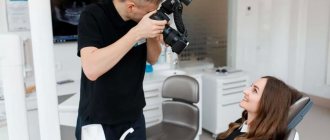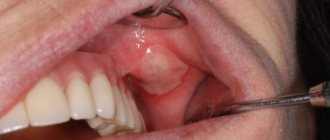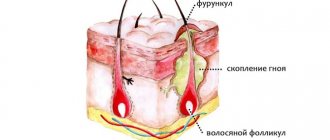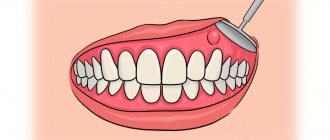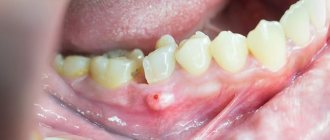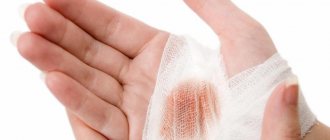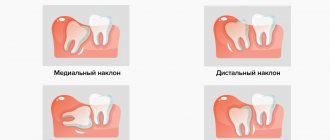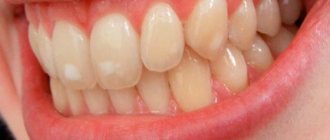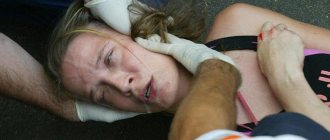Scarring
Healing of a granulating wound occurs through scarring and epithelization. At the final stage of healing, collagen fibers appear among the cells of the granulating tissue, the number of granules decreases, and the number of fibers increases. Ultimately, the fibrous substance passes into the connective tissue and forms a scar.
When wounds heal by primary intention, delicate scar tissue is formed, which tends to resolve.
In case of healing by secondary intention, a rough scar is formed, which will not be easy to get rid of.
When is secondary wound healing performed?
Wound healing by secondary intention is used when the edges of the wound are characterized by a large gap, as well as in the presence of an inflammatory-purulent process with intense severity of this phase.
The secondary intention technique is also used in cases where, during wound healing, excessive formation of granulation tissue begins inside it.
The formation of granulation tissue usually occurs 2–3 days after receiving a wound, when, against the background of existing areas of necrosis of damaged tissue, the process of granulation begins, with new tissues forming as islands.
Granulation tissue is a special type of ordinary connective tissue that appears in the body only when there is damage to it. The purpose of such tissue is to fill the wound cavity. Its appearance is usually observed precisely during wound healing through this particular type of tension, and it is formed during the inflammation phase, in its second period.
Granulation tissue is a special fine-grained and very delicate formation that can bleed quite heavily even with the slightest damage. With such tension, their appearance occurs from the edges, that is, from the walls of the wound, as well as from its depth, gradually filling the entire wound cavity and eliminating the existing defect.
The main purpose of granulation tissue during secondary intention is to protect the wound from the possible penetration of harmful microorganisms into it.
The tissue is able to perform this function because it contains many macrophages and leukocytes, and it also has a fairly dense structure.
Types of wound healing
According to the classification of I.V. Davydkovsky, the following types of wound healing are distinguished:
- closing the defect of the epithelial cover, which occurs when the upper epithelial layer is damaged;
- healing under a scab, or healing without a scar. Observed on mucous membranes in case of minor defects.
- healing by primary intention, or healing without suppuration. Characteristic of wounds with damage to the skin and tissue underneath.
- healing by secondary intention, or healing through suppuration and granulation. Occurs with extensive wounds, accompanied by foreign objects entering the wound, tissue necrosis, microbes and infections.
How is the procedure performed?
The recovery process is divided into three phases:
- The stage of acute inflammation is much more pronounced during infection. Before secondary intention, it is necessary to eliminate the source of microbial proliferation and prevent invasion into surrounding tissues. At the border of the pathological focus, a leukocyte shaft is formed as a protective barrier, which contributes to the gradual cleansing of the wound. The process takes from 3 days to 2 months. The severity and duration of the phase depends on the volume of damage, the composition of the pathogenic microflora, the body’s resistance, and the general condition of the patient. After complete melting of the necrotic, fibrinous masses followed by rejection, the wound is characterized by the absence of mucus. An injured cavity is formed. The zone is limited by a clear demarcation line, accompanied by the release of serous-purulent exudate or pure pus.
- During the wound regeneration phase, granulation actively develops. Outwardly it resembles small, pale pink nodules, the size of a grain. It is richly vascularized, contains a large number of vessels, and bleeds heavily when damaged. If the regeneration process does not occur correctly, the formation of hypergranulation begins, a phenomenon popularly called “wild meat”. In secondary intention, surgeons cauterize or excise excess tissue. If a biological sample is examined on a microscope, one can see hypertrophied granulation cells with an abundance of small vessels.
- The scar formation stage is the final phase of wound healing through secondary intention. The epithelium grows at different rates from the border of intact skin to the center in the form of a pale gray border. A special feature of the treatment method is a rough, multi-rayed scar with an irregular shape.
The duration of the recovery process after secondary intention depends on many factors.
It is necessary to study the aggressiveness and resistance of microflora to antibacterial therapy. The doctor must take into account the patient’s condition - lack of nutrients, cachexia, state of immunodeficiency, concomitant somatic pathology, large blood loss, environmental factors - exposure to radiation, chemical pathogens. If antibiotics are ineffective and pathogenic microflora penetrate deeply, an operation is performed to excise the affected skin, subcutaneous tissue, and muscles. In some cases, limb amputation may be necessary. Arthroscopy is used.
In the phase of acute inflammation, it is advisable to clean the wound with hydrogen peroxide and treat the pathological focus with antibacterial ointments. In case of severe condition of the patient with secondary intention, antibiotic therapy should be used.
Stages of healing
The wound healing process goes through three main stages: inflammation, regeneration, and restoration of the epithelium.
The inflammation phase begins immediately after injury and in an uncomplicated state lasts for 4–5 days. During the hemostasis stage, platelets attach to sites of injury and cause a chemical reaction that activates fibrin, which forms a matrix network and binds platelets to each other. This is how blood clots form, blocking damaged blood vessels and stopping bleeding.
At the stage of proliferation and regeneration, the process of angiogenesis, collagen deposition, and the formation of granulation tissue (young connective tissue formed in places of defects) occurs. The regeneration stage can last 2–4 weeks depending on the size of the defect.
The final stage is the formation of the epithelium. Depending on the severity of the injury, the process can last from several weeks to a year or more.
Classification of wounds. Wound process
A wound is any tissue damage accompanied by a violation of the integrity of the integument of the body. Such damage can be caused by various factors: mechanical, thermal, chemical, radiation. Combined wounds occur when several types of damaging factors are simultaneously exposed. Simultaneous or time-limited exposure to external damaging factors leads to the formation of acute wounds. Chronic wounds are the result of long-term, ongoing adverse effects on tissue. The nature of this effect is often endogenous, for example, disturbances of arterial or venous blood supply, innervation, or constant leakage of exudate from the purulent cavity. Another common cause of chronic wounds is prolonged local pressure on tissue.
Wounds are one of the most common traumatic injuries. Victims are injured in domestic, industrial, combat and criminal conditions. It is characteristic that most of the victims are of young working age. In addition, wounds are caused during surgical interventions. In the latter case, the main feature is the ability to create conditions that minimize the risk of wound complications. What is common to all wounds except post-operative wounds is that they are always contaminated with microorganisms and are often complicated by the development of infection.
Wound process
The main clinical signs of wounds immediately after their application are the presence of a defect in the skin or mucous membranes, bleeding and pain. Subsequently, the clinical picture corresponds to the phases of the wound process.
The formation of any wound is accompanied by a sequence of local and general reactions of the body. General reactions are more pronounced in the formation of acute wounds. They consist in the typical manifestations of stress syndrome - an increase in all vital processes under the influence of the sympathetic nervous system and hormones, an increase in basal metabolism and catabolism. When tissue breakdown products and microbial toxins are absorbed into the bloodstream, stimulating leukocytes to release cytokines, systemic inflammatory reactions may occur: fever, an increase in the number of leukocytes, tachycardia, and others. In the absence of complications, these phenomena completely stop after 4-5 days.
Local reactions of the body are aimed at restoring the integrity of damaged tissues. The healing of wounds of various organs and tissues has its own characteristics, depending on their morphological structure. The wound process can vary significantly in duration, but is always accompanied by the formation of a connective tissue scar. Without scar formation, only superficial wounds heal without damaging the germ layer of the skin. There are 3 phases of the wound process (Fig. 11. 1).
The inflammation phase begins immediately after injury and, in the absence of complications, lasts an average of 4-5 days. It is characterized by typical vascular reactions - vasoconstriction followed by vasodilation, exudation with the release of plasma proteins, migration and release of blood cells into the damaged area, fibrin loss with delimitation of the damaged area, edema and infiltration of surrounding tissues. Subsequently, fibrin undergoes fibrinolysis, and the wound is cleansed of necrotic tissue and microorganisms with the participation of leukocytes and their enzymes.
The regeneration or proliferation phase lasts on average 2-4 weeks. Regeneration processes begin as early as 1 day after injury, and their duration depends on the size of the wound defect and the morphology of the damaged tissue. Migration of fibroblasts, formation of collagen and ground substance, new formation of blood vessels with the development of granulation tissue at the site of the tissue defect occurs. Exudation and swelling gradually decrease, granulation tissue from the bottom of the wound fills the entire defect. Granulation tissue contains many newly formed vessels and is practically not innervated. During the normal course of the wound process, the surface of granulating wounds is bright, “juicy”; when dressings, high contact bleeding and slight pain are characteristic.
The phase of epithelialization and reorganization of the scar, depending on the morphology of the tissue, lasts from several weeks to a year. Epithelization begins from the edges of the wound simultaneously with the formation of granulation tissue. This process is regulated by the action of epidermal cheilon, which is a contact inhibitor of proliferation. Immediately after the formation of the scar, its restructuring begins: elastic fibers are formed and a new fibrous network develops, and the water content in the scar tissue decreases.
The course of the wound process is influenced by various general and local factors. Common factors include: age, nutritional status and immune status of the patient, various disorders of homeostasis, concomitant diseases, including diabetes mellitus, taking anti-inflammatory drugs, cytostatics, massive antibiotic therapy. Local factors influencing the course of the wound process include the state of the blood supply and the degree of tissue trauma in the damaged area, the level of microbial contamination of the wound and the quality of wound care.
According to the degree of contamination and the presence of signs of infection, all wounds are divided into 3 types: aseptic, contaminated and infected.
· Only surgical wounds with “clean” surgical procedures are aseptic.
· Contaminated are wounds contaminated with microflora, but without signs of suppuration. These include all accidental wounds after they are inflicted and some surgical wounds.
· Infected are purulent wounds, that is, wounds with signs of an infectious-inflammatory process. They are divided into primary infected - formed after operations for acute purulent processes, and secondary infected - wounds that festered during the healing process.
The wound process ends with wound healing. The following types of wound healing are distinguished:
· Healing by primary intention – healing without suppuration. It occurs with the development of a linear scar without the formation of visible interstitial tissue. Such healing is typical for wounds with smooth viable edges, separated from each other by no more than 1 cm, and with microbial contamination of tissues below a critical level. Surgical wounds usually heal by primary intention when primary sutures are applied.
· Delayed primary - healing according to the type of primary intention. This is healing without suppuration with delayed closure of the wound with sutures.
· Healing by secondary intention – healing through suppuration and granulation with the development of a rough scar and the formation of visible interstitial tissue. Occurs with extensive tissue defects that do not allow primary comparison of the wound walls and with the development of wound infection.
· Healing under a scab – healing without a scar. Occurs with superficial wounds without damage to the germ layer of the skin. Under the scab, consisting of fibrin and blood cells, rapid regeneration of the epidermis occurs.
The course of the wound process described above is typical for wounds that were the result of a one-time exposure to a damaging factor. With long-term or constant adverse effects leading to disruption of the functioning of the integument of the body and complicating healing, which occurs in the case of the formation of chronic wounds, it is characteristic that there are signs of all three of its phases at once. The bottom of a chronic wound is simultaneously covered with fibrin and granulations; there may be areas of necrosis and purulent discharge. Granulations are sluggish, pale. The edges of the wound and the surrounding tissue are compacted. Marginal epithelialization often occurs. Typically, palpation of the damaged area is not painful.
The surrounding tissues have changes characteristic of the disease that caused the formation of a chronic wound. If the damaging factors are not eliminated, chronic wounds, even with intensive treatment, do not heal for a long time, and after healing they recur - in the same or in a neighboring area. With long-standing chronic wounds there is a risk of their malignancy.
Wound treatment
The choice of wound treatment method largely depends on their type (infected or necrotic, wet exuding or fibrous granulating, trophic ulcers or bedsores). Only a doctor can choose the optimal solution for treating each type of wound.
In addition, at each stage of wound healing, it is necessary to use a different agent: one that promotes the removal of exudate, the formation of granulation tissue, accelerating epithelization, etc.
When treating wounds, you need to remember that the wound does not heal on its own, but thanks to the body’s resources aimed at healing it. The immune, endocrine, and circulatory systems are involved in this process. A qualified doctor, along with treating the wound itself, will definitely prescribe a vitamin complex to maintain the body.
Recovery after healing
The process of treating wounds using the secondary intention method is characterized by the duration of epithelization, which is due to the occurrence of difficulties. The scar takes a long time to form, as a result it has an irregular shape, does not stretch well, and can impede the range of movement.
Complete rehabilitation depends on factors:
- high-quality hemostasis;
- prevention of inflammation, secondary infection;
- proper cell restructuring.
Proper and timely care of scar tissue will help speed up rehabilitation after secondary wound healing.
To soften, use special ointments based on collagen, elastin, moisturizing compresses, and traditional medicine methods. In the postoperative period, doctors prescribe ultrasound therapy to speed up the healing process and maintain local immunity.
Electrotherapy of a wound under tension includes electro- and phonophoresis, diadynamic therapy. Treatment methods are aimed at strengthening the general condition, improving local and general blood circulation and the functioning of the nervous system. Local ultraviolet irradiation promotes rapid healing, the formation of a smoother scar, and is an excellent prevention of secondary wound infection.
How to speed up healing
The speed of wound healing varies. It depends on the nature of the injury and the individual characteristics of the patient, such as age, nutrition, and medications taken.
To speed up healing, it is necessary to provide optimal conditions for tissue regeneration at each stage. This role is fulfilled by therapeutic dressings designed for each stage of healing.
The method of hydrotherapy has a positive effect. Its essence consists in the sequential use of two dressings HydroClean and HydroTac. Using the first, the wound is cleaned, and then a second is applied, creating optimal conditions for granulation and epithelization.
Causes of non-healing wounds
The immediate cause of non-healing wounds is insufficient activity of restoration processes in the body, slow tissue regeneration. Moreover, the conditions under which regeneration slows down can be varied.
Among the general factors (i.e., affecting the state of the body as a whole), the following can be identified:
• weakened immunity due to concomitant disease or chronic immunodeficiency state;
• chronic intoxication of the body;
• metabolic disease;
• diabetes; this condition can be considered a severe form of metabolic disorder, namely glucose metabolism. Disturbances in the normal absorption of glucose lead to increased tissue fragility and a slowdown in the regeneration process;
• circulatory disorders - both general and local. The cause may be atherosclerosis, deformation of vascular walls, and diseases of the cardiovascular system. Local circulatory disorders can be caused by prolonged compression of tissues and pinching of small blood vessels (an example of a chronic wound against the background of constant compression of tissues - bedsores);
• hypo- or avitaminosis of vitamins A, C, K and group B, which play an important role in the process of tissue regeneration;
• lack of calcium or zinc in the body;
• exhaustion – nutritional (due to insufficient or malnutrition) or senile;
• presence of cancer.
A specific factor in the appearance of chronic wounds is poor circulation in the legs, most often due to varicose veins. Against the background of impaired blood circulation, trophic ulcers develop on the legs (usually in the shins) - difficult-to-heal tissue defects.
Local factors affecting the wound itself and the area around it include:
• infection;
• the presence of necrotic tissue in the wound (they increase the risk of suppuration and, accordingly, the duration of healing);
• presence of foreign bodies in the wound;
• the presence of bleeding in the wound (also increases the risk of infection);
• repeated damage to an unhealed wound.
The risk of a wound becoming chronic increases if, in addition to the skin, other tissues are damaged - subcutaneous tissue, nerves, muscles, tendons, bones.
What to do if the wound does not heal
Non-healing or chronic are wounds that do not respond adequately to therapy despite prolonged treatment. Such wounds are usually caused not by external factors, but by reasons hidden inside the body, leading to disruption of metabolic processes and, as a consequence, disruption of the wound healing process. This category includes trophic ulcers, bedsores, and diabetic foot ulcers. Before using any dressings, consult a doctor: therapy and treatment of wounds can only be prescribed to you by a doctor!
For the treatment of chronic wounds, HARTMANN has developed a two-bandage system - HydroClean Plus and HydroTac.
The HydroClean Plus cleansing dressing can be used at all stages of wound healing, effectively removing necrotic tissue and pathogenic bacteria from the wound surface. They get caught in the absorbent layer and die under the influence of the antiseptic. The HydroTac dressing has absorbent and moisturizing properties and also protects the wound from secondary infection.
With the help of the hydrotherapy system, many patients have been able to significantly alleviate suffering and improve their quality of life.
Carrying out the procedure
As a rule, when healing wounds by secondary intention, there are several main stages. In the first of them, the wound cavity is cleansed from areas of necrosis, as well as from blood clots, which is accompanied by an inflammatory process and a very copious discharge of pus.
The intensity of the process always depends on the general condition of the patient, the functioning of his immune system, the properties of microorganisms that have entered the wound cavity, as well as the prevalence of areas of tissue necrosis and their nature.
The fastest rejection of dead muscle tissue and skin occurs, while the necrotic parts of cartilage, tendons and bones are rejected very slowly, so the time frame for complete cleansing of the wound cavity will be different in each individual case. For some, the wound is cleared in a week and heals quickly, while for another patient this process may take several months.
The next stage of healing in secondary wound healing is the formation of granulation and its spread . It is at the site of growth of this tissue that the formation of a scar subsequently occurs. If the formation of this tissue is excessive, doctors can cauterize it with a special lapis solution.
It is important to remember that wounds that were not sutured heal by secondary intention, so the recovery process can be quite lengthy and sometimes difficult.
During such healing, a scar can form over a long period of time, and in most cases its shape will be irregular; it may turn out to be very convex or, conversely, sunken, drawn inward, creating significant unevenness on the surface of the skin. The scar can have a variety of shapes, including being polygonal.
The timing of the formation of the final scar largely depends on the nature and extent of the inflammation process, as well as on the area of existing damage, its severity and depth.
Complete wound healing, as well as the duration of this process, is determined by certain physiological factors, in particular:
- Hemostasis, which occurs within a few minutes after receiving a wound.
- A process of inflammation that occurs after the hemostasis stage and occurs within three days after the injury occurs.
- Proliferation, which begins after the third day and takes the next 9 to 10 days. It is during this period that granulation tissue forms.
- Restructuring of damaged tissue, which can last for several months after injury.
An important point in the process of wound healing by secondary intention is to reduce the duration of the healing stages , if any complications arise that increase these periods. For proper and rapid healing, it is important to ensure that all physiological processes take place one by one and in due time.
If healing in one of these periods begins to drag on, this will certainly affect the duration of the remaining stages. If several stages are disrupted, the overall process is delayed, which usually leads to the formation of a denser and more pronounced scar.
Remodeling of granulation tissue is the final stage of healing during secondary healing. At this time, scar formation occurs, which is a very long process. During this period, new tissues are rebuilt, thickened, scar formation and maturation occur, and its tensile strength also increases. However, it should be remembered that such fabric will never be able to achieve the level of strength of natural, undamaged leather.
